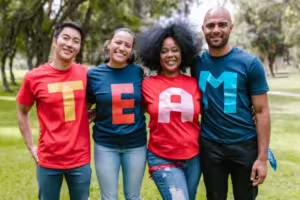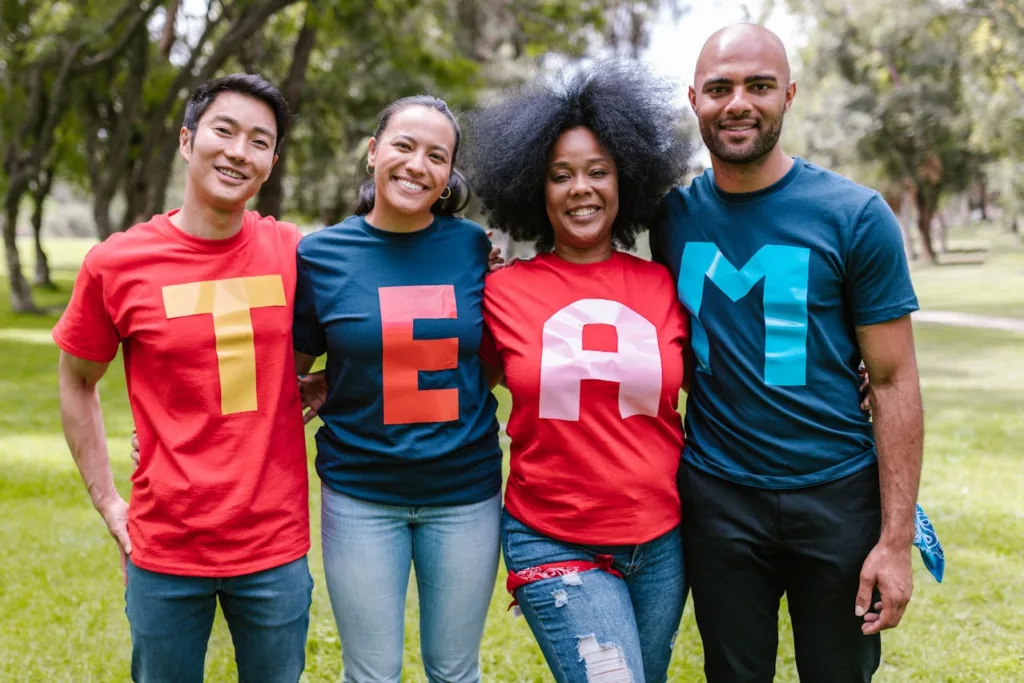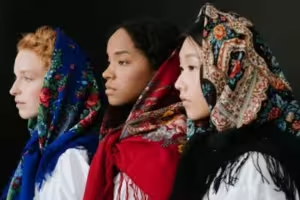 Imagine a world where every dinner table conversation brings stories from different cultural backgrounds, and every game teaches a lesson from a distant land. This is the vibrant tapestry of cultural diversity. Each culture offers unique norms, values, and practices that enrich our global community. Embracing and celebrating this diversity, especially from a young age, opens doors to a world of understanding and acceptance.
Imagine a world where every dinner table conversation brings stories from different cultural backgrounds, and every game teaches a lesson from a distant land. This is the vibrant tapestry of cultural diversity. Each culture offers unique norms, values, and practices that enrich our global community. Embracing and celebrating this diversity, especially from a young age, opens doors to a world of understanding and acceptance.
What better way to introduce children to this kaleidoscope of cultures than through the personal experience of hosting an au pair from another part of the world? It’s not just an adventure; it’s a journey into the heart of global diversity that prepares them for a successful, interconnected future. In this exploration, we’ll dive into examples of diversity in society and uncover why embracing cultural diversity is a pivotal part of a child’s development.
What is Cultural Diversity?
Cultural diversity refers to the presence of multiple different cultures within a single group or society. When a city is home to people from all around the world with different cultures and backgrounds, that’s an example of diversity. New York City is an excellent example of cultural diversity in the United States, as over 37% of the city’s residents were born in another country.
Many of these examples of diverse populations occur because people move to new countries for economic opportunity. When hosting an au pair, you’re contributing to the cultural diversity of your area.
Why Cultural Diversity is Important for Kids
Exposing your children to cultural diversity helps them learn how to accept and celebrate differences from a young age. Interacting with people from different backgrounds also teaches children nuanced communication skills, which will help them in school, work, and social situations as they get older. Finally, exploring new cultures is fun and exciting and can spark your child’s creativity.
8 Cultural Diversity Examples & How They Benefit Children
There are so many different ways for families to explore and benefit from new cultures. Here are nine social diversity examples to explore with your family. Your au pair can be a key part of this journey, sharing their unique culture and experiences to enrich your family’s understanding of the world.
1. Explore Different Cuisines
Trying new foods is a fun way to learn more about different cultures and maybe even find your new favorite dinner or snack. Explore new restaurants in your city with your family, or try making international meals at home. Exposing kids to new cuisines will help them feel more comfortable with new flavors, and they may even develop a passion for cooking!
2. Learn Traditional Games and Activities
New games and hobbies are another exciting avenue to explore cultural diversity. Engaging in activities like Mancala, a game originating in Africa, or trying origami, the Japanese art of paper folding, allows children to directly experience cultural differences. Examples like these not only provide entertainment but also serve as insightful windows into a rich variety of global traditions and practices.
 3. Celebrate Cultural Festivals and Holidays
3. Celebrate Cultural Festivals and Holidays
Festivals and holidays are a joyful way to celebrate and learn about other cultures. Research family-friendly cultural events happening in your area to attend. At these holiday celebrations, you’ll learn about another culture’s values and practices, and you’ll likely also get to enjoy some of their food, music, and pastimes.
4. Share Folktales and Stories
Stories have been an important form of cultural exchange for centuries. There are so many lessons to be learned from different cultures, and these stories can be pretty entertaining, too. Visit your local library and look for books of folktales from other cultures. This is a great opportunity for your children to practice their reading skills while learning about other cultures.
5. Practice Basic Phrases in Another Language
Learning another language is a fun and valuable skill for both children and adults. If your au pair speaks another language, try learning basic greetings and phrases to communicate with them. Children pick up new languages more quickly than adults, so this is the perfect time for them to start practicing.
6. Understand Cultural Values and Customs
As you’re exploring these different cultural background examples, be sure to take the time to learn about different values and customs. This will help your family be more understanding and tolerant of people from other cultures, and it will make for interesting discussions. For example, you can learn about different religious practices or social norms in other cultures. This exploration not only helps in understanding the culturally diverse definition of certain behaviors but also aids in grasping the culturally diverse meaning behind these practices.
7. Explore Cultural History
There’s so much to learn from history, but many people only learn about the past through their own cultural lens. As you’re exploring other cultures, try learning about history from their point of view. Read books or watch movies that depict history from another cultural background.
8. Discuss Different Worldviews and Perspectives
An effective way to expand your horizons is by talking with people from other cultures about their worldviews. Although children may not understand the nuances of global politics or pop culture yet, they can still have fun discussing their own opinions with someone from a different culture.
Embrace Cultural Diversity with an Au Pair
Hosting an au pair is not only a convenient childcare option, but it’s also an opportunity for your entire family to celebrate these cultural diversity examples. Find an au pair with Go Au Pair, an au pair agency connecting American families with international au pairs. Get in touch today to learn more.


 3. Celebrate Cultural Festivals and Holidays
3. Celebrate Cultural Festivals and Holidays